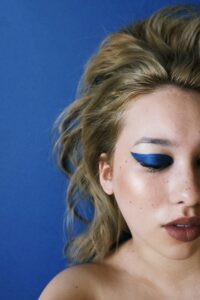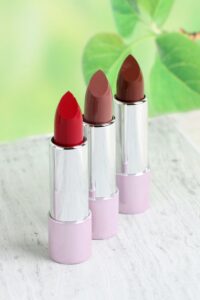Harmonizing Makeup Shades

In the realm of beauty and makeup, color plays a crucial role in creating stunning and captivating looks. Whether you’re a makeup enthusiast or a professional artist, understanding color theory and its application can take your makeup skills to new heights. From choosing the right shades to mastering the art of mixing colors, this blog will delve into the techniques and principles of color theory makeup. Get ready to explore a world of endless possibilities and create truly unique and harmonious looks.
1. The Basics of Color Theory
To begin our journey into color theory makeup, let’s first understand the basics. Colors can be classified into primary (red, blue, and yellow), secondary (green, purple, and orange), and tertiary (a mix of primary and secondary colors) categories. These colors interact with each other through various principles, such as complementary, analogous, and triadic color schemes. Familiarizing yourself with these concepts will provide a solid foundation for your color choices.
2. Choosing the Right Shades
When it comes to makeup, the right color choice can enhance your features, complement your skin tone, and create a cohesive look. Consider your undertone (warm, cool, or neutral) to guide your selection. Warm undertones pair well with earthy tones, oranges, and golds, while cool undertones harmonize with blues, purples, and silvers. Neutral undertones can embrace a wide range of colors. Experiment with different shades to find what works best for you.
3. Creating a Monochromatic Look
Monochromatic makeup is a timeless trend that involves using different shades of a single color to create a cohesive and harmonious look. Start with a base shade that matches your desired color and intensify or lighten it for various elements of your makeup. For example, if you choose purple as your base color, use a lighter shade for the lid, a medium shade for the crease, and a deeper shade for the outer corner. Finish with coordinating blush and lip colors to complete the monochromatic effect.
4. Embracing Complementary Colors
Complementary colors are pairs of colors that are opposite each other on the color wheel. When used together, they create a vibrant and striking contrast. For instance, green and red, purple and yellow, or blue and orange are complementary pairs. To incorporate complementary colors into your makeup, consider using one color for the eyes and the other for the lips. For example, if you choose a bold blue eyeshadow, pair it with a warm orange lipstick. This contrasting combination will make your features pop and create a captivating look.
5. Analogous Color Schemes
Analogous colors are located next to each other on the color wheel and create a harmonious and subtle effect when used together. This color scheme is perfect for creating soft and blended makeup looks. Choose three adjacent colors, such as blue, green, and teal, and blend them seamlessly on your eyes for a gradient effect. Keep the rest of your makeup neutral to let the analogous colors shine.

6. Mixing and Customizing Colors
One of the most exciting aspects of color theory makeup is the ability to mix and customize colors to create unique shades. Invest in a color mixing palette or use a clean surface to blend different shades together. Experiment with mixing primary colors to create secondary and tertiary shades. This technique allows you to have complete control over your color palette and opens up endless possibilities for creating personalized looks.
7. Utilizing Color Placement Techniques
Beyond choosing and mixing colors, understanding color placement techniques is essential for achieving specific effects. For instance, using a lighter shade on the inner corner of the eyes can make them appear brighter and more awake. Placing a darker shade in the crease adds depth and dimension. Experiment with different placements to enhance your eye shape and achieve the desired look.
8. Harmonizing with Your Outfit
When creating a makeup look, consider the color palette of your outfit as well. Harmonizing your makeup with your outfit can tie the entire look together and create a visually pleasing ensemble. You can either choose complementary colors to create a striking contrast, or opt for analogous colors to maintain a cohesive and harmonious appearance. The key is to find a balance that complements your features and showcases your personal style.
Conclusion:
Color theory makeup opens up a world of creativity and allows you to express yourself through a vibrant and diverse palette. By understanding the principles of color theory, choosing the right shades, and mastering techniques for mixing and applying colors, you can elevate your makeup skills to new heights. Remember to experiment, have fun, and embrace the limitless possibilities that color theory offers. So go ahead, unleash your inner artist, and create mesmerizing makeup looks that turn heads and inspire others to explore the world of color theory makeup.

